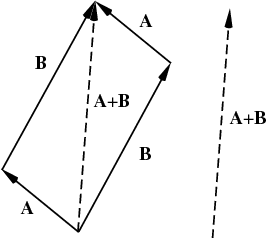Question #82570
1 Answer
They're useful in vector addition.
Explanation:
Adding vectors is a concept that one will be using throughout their physics career, so understanding the concepts of vector addition is vital:) These two laws are similar; here's what they are:
The triangle law of vector addition states that if two vectors (which we'll call
where
The parallelogram law of vector addition states that when two vectors (

Notice that the parallelogram they form is also just two trianglular vector sums, each triangle starting with a different vector. This proves that vector addition obeys the commutative law of addition, and that their order doesn't matter.
